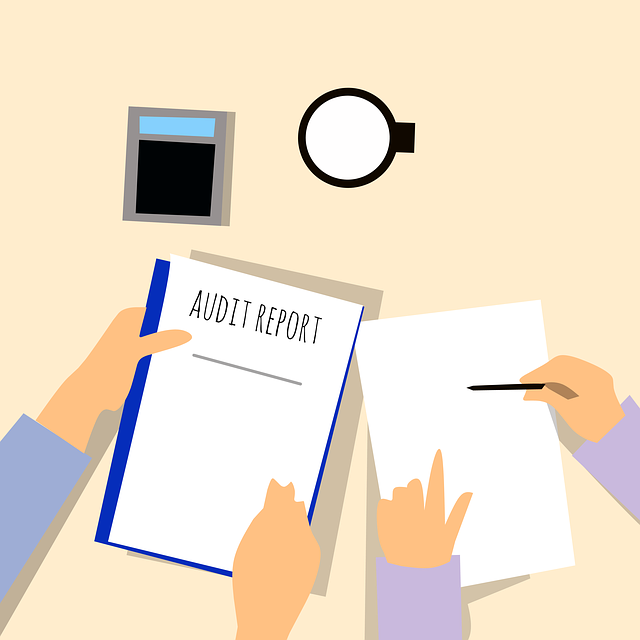A full SEO audit is a comprehensive evaluation of a website's online performance and health, focusing on technical aspects, content quality, keyword usage, and user experience. It identifies strengths, weaknesses, opportunities, and threats through analysis of site structure, loading speeds, keyword targeting, and mobile usability. By addressing issues like broken links and duplicate content, businesses can optimize their sites for better search engine rankings, boosting organic traffic and conversion rates. Tools like SEMrush, Ahrefs, and Moz streamline this process, enabling strategic resource allocation and continuous monitoring for sustained digital marketing success.
A full SEO site audit is an indispensable process for any business aiming to maximize its online visibility. This in-depth analysis scrutinizes every facet of a website, from on-page content to off-page backlinks, providing critical insights into its search engine optimization (SEO) performance. By understanding the purpose and benefits of such an audit, businesses can uncover hidden issues, capitalize on strengths, and refine their SEO strategies for improved search rankings and increased web traffic.
Understanding a Full SEO Site Audit

A full SEO site audit is a comprehensive analysis of a website’s performance and health from an SEO perspective. It involves scrutinizing every aspect of your online presence, from technical elements like site structure and loading speeds to content quality, keyword usage, and user experience. This in-depth evaluation aims to identify strengths, weaknesses, opportunities, and threats (SWOT analysis) that can impact a website’s search engine rankings and overall visibility.
By conducting a full SEO audit, businesses gain valuable insights into their digital marketing efforts. It helps pinpoint issues like broken links, duplicate content, or mobile usability problems that may hinder search engine crawlers from effectively indexing the site. Moreover, it offers recommendations for optimization, ensuring the website aligns with best practices and current industry standards, ultimately driving organic traffic growth and improved conversion rates.
The Purpose and Benefits of Conducting an SEO Audit

A full SEO site audit is a comprehensive review of a website’s online visibility, performance, and health. It serves as a crucial tool for businesses to understand their current standing in search engine rankings and identify areas where they can improve. By conducting an SEO audit, companies gain valuable insights into how search engines crawl and index their site, what content resonates with audiences, and which technical aspects might hinder or enhance their online presence.
The benefits of this process are manifold. It helps pinpoint issues like broken links, slow loading times, duplicate content, or poor mobile usability—all factors that can negatively impact SEO. Moreover, it allows for the discovery of opportunities to optimize content, improve keyword targeting, and enhance overall user experience. An SEO audit provides a roadmap for enhancing search engine visibility, driving organic traffic, and ultimately boosting online success.
Key Components of a Comprehensive SEO Audit

A full SEO site audit is an essential process that involves a thorough examination of a website’s performance and health from an organic search perspective. It is a comprehensive review that goes beyond surface-level analysis, delving into various key components to uncover areas of improvement and maximize online visibility. The primary goal is to identify technical issues, optimize content strategy, and ensure the site aligns with the latest search engine algorithms.
The audit should encompass several critical elements, such as keyword research, on-page optimization, technical SEO analysis, link profile evaluation, and competitive benchmarking. By examining keywords and their implementation across pages, experts can uncover opportunities to enhance relevance and target the right audience. Technical aspects like site speed, mobile-friendliness, and schema markup are also crucial, ensuring the website is technically sound and accessible to search engines. Additionally, analyzing backlinks and the overall link profile helps in gauging the site’s authority and identifying potential issues like toxic links.
Techniques for On-Page Optimization Analysis

A comprehensive SEO site audit involves a meticulous On-Page Optimization Analysis, which is crucial for understanding and improving a website’s search engine visibility. This process includes examining key elements such as meta tags, headings, content quality, and structure. By evaluating these factors, professionals can identify areas where a site may be underperforming or lacking in alignment with best practices.
For instance, checking title tags ensures they are unique, descriptive, and include target keywords; this signals to search engines what the page is about. Similarly, optimising header tags (H1-H6) for keyword placement enhances content organisation and readability, guiding both users and algorithms through the page’s hierarchy. Content analysis involves assessing relevance, uniqueness, and keyword density, ensuring it meets user intent and search engine requirements alike.
Exploring Off-Page Factors in SEO Audit

A comprehensive SEO site audit goes beyond the boundaries of on-page optimization, delving into off-page factors that significantly influence search engine rankings. This involves a meticulous examination of elements external to your website but which play a pivotal role in how search engines perceive and rank your pages. Key among these are backlinks, social media signals, and brand mentions.
Backlinks, or inbound links from other websites, act as digital endorsements, signaling to search engines that your site offers valuable content. Social media interactions, including shares, likes, and comments, contribute to the buzz surrounding your brand, enhancing its online visibility and credibility. Additionally, brand mentions, even without direct links, can positively impact SEO by increasing the overall exposure and trustworthiness of your website in the eyes of search algorithms.
Tools for Efficient SEO Site Audit Process

Conducting a comprehensive SEO site audit is essential for any business aiming to optimize its online visibility and performance. Thankfully, numerous tools are available to streamline this process, making it more efficient and effective. These include industry-leading platforms like SEMrush, Ahrefs, and Moz, which offer powerful features such as keyword research, backlink analysis, technical SEO checks, and ranking tracking.
These SEO audit tools provide valuable insights into a website’s on-page and off-page elements, helping identify issues like broken links, duplicate content, meta tag errors, and low-quality backlinks. By leveraging these tools, businesses can quickly pinpoint areas for improvement and create actionable plans to enhance their search engine rankings, drive organic traffic, and ultimately boost conversions.
Interpreting Audit Findings and Prioritizing Actions

After conducting a comprehensive SEO audit, the next step is to interpret the findings and develop an actionable plan. This involves analyzing the data gathered from various tools and identifying areas that require improvement. Each issue discovered during the audit should be carefully evaluated based on its potential impact on search engine rankings and user experience. Prioritizing actions is crucial; not all issues are created equal, and focusing on the most significant problems will yield the best results.
For instance, critical errors like broken links or mobile usability issues should be addressed immediately to ensure a seamless user journey. On the other hand, minor optimization opportunities might contribute to long-term growth but may not be as pressing. By organizing the audit findings into a prioritized list, businesses can effectively allocate resources and create a strategic roadmap for implementing SEO best practices.
Implementing Changes Post-SEO Audit

After conducting a comprehensive SEO audit, the next step is crucial – implementing changes based on the insights gained. This process involves addressing any technical issues identified in the audit, such as fixing broken links, optimizing meta tags, and ensuring a seamless user experience across all devices. By rectifying these problems, you enhance your website’s performance and search engine visibility.
Additionally, the SEO Audit reveals opportunities for content optimization, keyword strategy refinement, and improved site architecture. Incorporating these recommendations will help improve your website’s ranking potential, drive organic traffic, and provide a better user experience. Regularly reviewing and updating your site based on SEO best practices ensures that it remains competitive in the dynamic digital landscape.
Continuous Monitoring and SEO Strategy Refinement

Continuous monitoring is an integral part of any successful SEO strategy, especially after conducting a comprehensive SEO site audit. This involves regularly scanning and analyzing various metrics to understand how your website performs in the digital landscape. By keeping a close eye on key performance indicators (KPIs), you can quickly identify areas that need improvement or optimization. For instance, tracking organic traffic sources, user behavior, conversion rates, and bounce rates provides valuable insights into what’s working and what isn’t.
SEO strategy refinement is an ongoing process that leverages data from continuous monitoring. Regularly reviewing and updating your SEO tactics ensure they remain aligned with the latest industry trends and search engine algorithms. This may include optimizing on-page elements, refining content strategies, improving site speed, or enhancing mobile usability. A dynamic approach to SEO allows you to stay ahead of the curve, adapt to changes, and ultimately drive better results from your digital marketing efforts.
